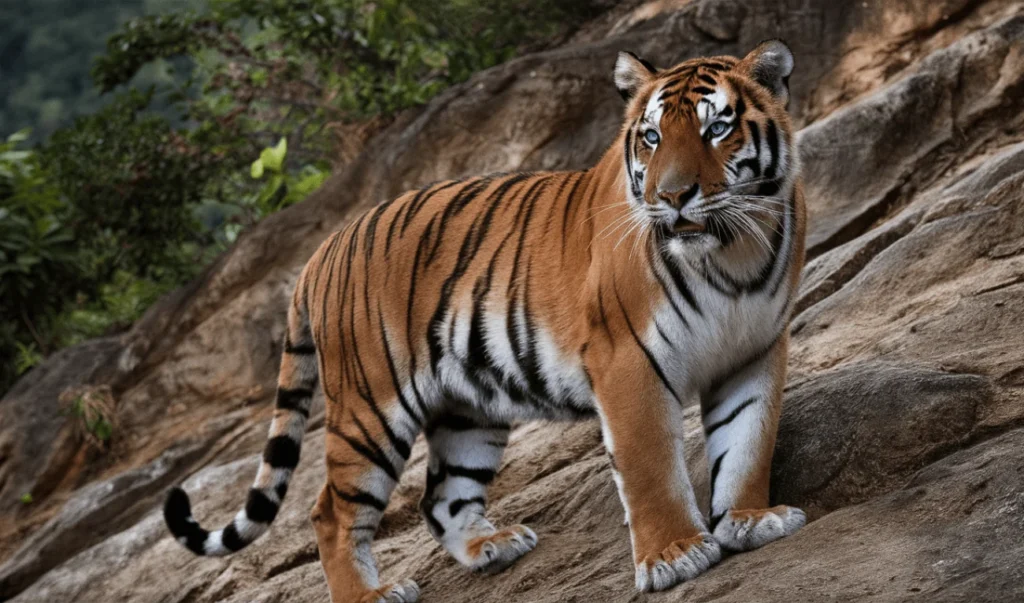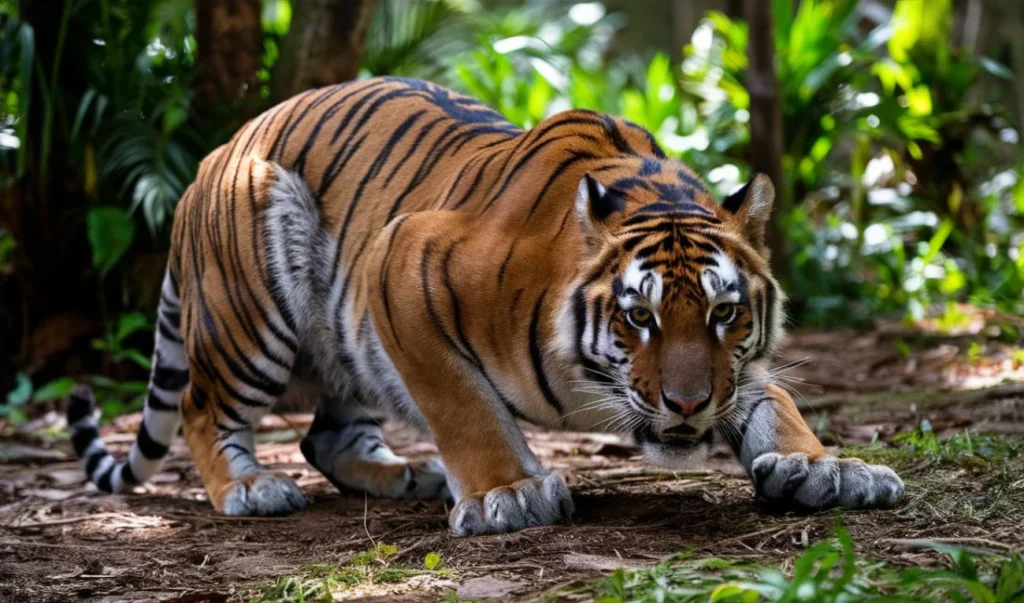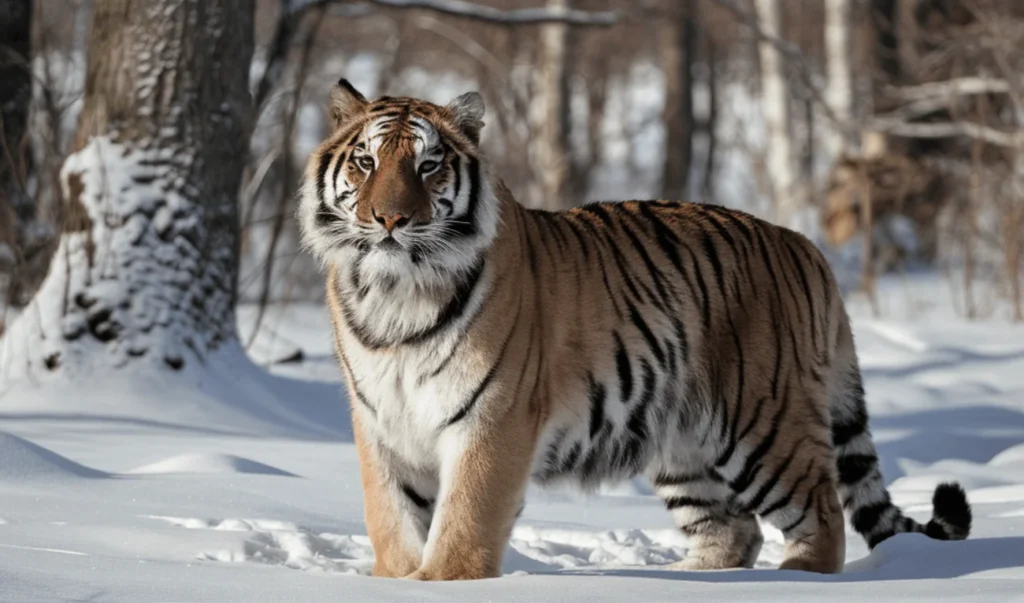Exploring the Tiger Species Around the World
Introduction
Tigers, the largest of the big cats, are fascinating and powerful creatures that captivate our imagination. With their striking stripes and majestic presence, tigers are not only symbols of strength and beauty but also critical to the health of their ecosystems. In this blog post, we’ll explore the different tiger species around the world, their unique characteristics, habitats, and the challenges they face.
Overview of Tiger Species
Bengal Tiger (Panthera tigris tigris)

The Bengal tiger, native to the Indian subcontinent, is the most numerous of all tiger subspecies, with around 2,500 individuals in the wild. Known for its vibrant orange coat with black stripes, the Bengal tiger inhabits diverse landscapes, from the mangrove forests of the Sundarbans to the dense jungles and grasslands of India, Bangladesh, Nepal, and Bhutan. These tigers are renowned for their adaptability to various habitats and are often the focus of conservation efforts due to their relatively stable population.
Indochinese Tiger (Panthera tigris corbetti)

Found in the forests and grasslands of Southeast Asia, the Indochinese tiger population is critically endangered, with an estimated 350 individuals remaining. These tigers are slightly smaller and darker than their Bengal counterparts, with narrower stripes. They primarily inhabit Thailand, Cambodia, Laos, Vietnam, and Myanmar. Habitat loss and poaching are significant threats to their survival, and concerted efforts are needed to protect their dwindling populations.
Malayan Tiger (Panthera tigris jacksoni)

The Malayan tiger, a subspecies native to the Malay Peninsula, is critically endangered, with fewer than 200 individuals left in the wild. These tigers are smaller than the Bengal and Indochinese tigers and have more closely spaced stripes. Malaysia has implemented various conservation programs, including the establishment of protected areas and anti-poaching initiatives, to save this subspecies from extinction.
Siberian Tiger (Panthera tigris altaica)

The Siberian tiger, also known as the Amur tiger, is the largest of all tiger subspecies. Found primarily in the forests of the Russian Far East, with small populations in China and possibly North Korea, the Siberian tiger has adapted to harsh, cold climates. Its thick fur and larger size help it survive in these conditions. Conservation efforts have stabilized their population, with around 500 individuals in the wild, thanks to strong legal protection and habitat restoration projects.
South China Tiger (Panthera tigris amoyensis)

The South China tiger is functionally extinct in the wild, with only a few individuals remaining in captivity. Historically found in southern China, this subspecies faced severe habitat loss and extensive hunting. Conservationists are working on captive breeding programs with the hope of reintroducing these tigers into the wild, but the challenges are immense due to the lack of suitable habitat and genetic diversity.
Sumatran Tiger (Panthera tigris sumatrae)
The Sumatran tiger, the smallest of all tiger subspecies, is critically endangered, with an estimated 400-500 individuals remaining in the wild. Native to the Indonesian island of Sumatra, these tigers have distinctive thick black stripes and a mane-like ruff around their necks. They inhabit tropical rainforests, freshwater swamp forests, and peat swamps. Habitat loss due to deforestation for palm oil plantations and poaching are significant threats to their survival.
Unique Characteristics and Behaviors
Physical Adaptations
Each tiger subspecies has unique physical adaptations that help it survive in its specific environment. For example, the Siberian tiger’s thick fur and fat layer provide insulation against the cold, while the Bengal tiger’s powerful limbs and strong jaws enable it to take down large prey such as deer and wild boar. These adaptations highlight the incredible versatility and resilience of tigers as a species.
Hunting and Diet
Tigers are solitary hunters, relying on stealth and strength to ambush their prey. They typically hunt large ungulates like deer, wild boar, and sometimes even smaller mammals or birds. Tigers have an acute sense of hearing and sight, which aids them in locating prey. Their retractable claws and sharp teeth make them formidable predators. Each subspecies has developed hunting strategies suited to its environment, such as the Bengal tiger’s proficiency in swimming to catch prey in the Sundarbans’ waterways.
Reproduction and Lifespan
Tigers reach sexual maturity at around 3-4 years of age. Females give birth to a litter of 2-4 cubs after a gestation period of about 3.5 months. Tiger cubs are born blind and rely entirely on their mother for nourishment and protection. They begin learning hunting skills at around six months old and become independent by 18-24 months. In the wild, tigers typically live for 10-15 years, although some individuals in captivity have reached over 20 years of age.
Conservation Status and Challenges
Habitat Loss and Fragmentation
Habitat loss and fragmentation are major threats to all tiger subspecies. Deforestation for agriculture, logging, and infrastructure development destroys and fragments their habitats, making it difficult for tigers to find prey, mates, and safe territories. Protected areas and wildlife corridors are essential for maintaining viable tiger populations and ensuring genetic diversity.
Poaching and Illegal Wildlife Trade
Poaching for tiger parts, driven by the illegal wildlife trade, continues to decimate tiger populations. Tiger bones, skins, and other parts are highly valued in traditional medicine and as status symbols. Combating this illegal trade requires international cooperation, stringent law enforcement, and public awareness campaigns to reduce demand.
Human-Tiger Conflict
As human populations grow and encroach on tiger habitats, conflicts between tigers and humans become more frequent. Tigers may prey on livestock, leading to retaliatory killings by farmers. Effective conflict mitigation strategies, such as compensation schemes for livestock losses and community-based conservation programs, are essential to reduce these conflicts and promote coexistence.
Success Stories and Positive Trends
India: Project Tiger
India’s Project Tiger, launched in 1973, has been one of the most successful tiger conservation initiatives. The project has established over 50 tiger reserves across the country, leading to a significant increase in the tiger population. Strong legal protection, habitat restoration, and community involvement have been key factors in this success.
Nepal: Community Involvement
Nepal has nearly doubled its tiger population since 2009 through rigorous anti-poaching efforts and community involvement. The country uses advanced technology, such as camera traps and GPS collars, to monitor tiger movements and prevent poaching. Community-based programs, such as eco-tourism and alternative livelihoods, have also played a crucial role in reducing human-tiger conflicts and promoting conservation.
Russia: Habitat Restoration
In Russia, the Siberian tiger population has stabilized due to strong protection measures and habitat restoration projects. The Amur Tiger Centre, established by the Russian government, works closely with local communities and international partners to safeguard tiger habitats and promote sustainable development.
Conclusion
Exploring the different tiger species around the world highlights the incredible diversity and adaptability of these magnificent creatures. While each subspecies faces unique challenges, concerted conservation efforts have shown that it is possible to reverse the decline of tiger populations. By supporting these efforts and raising awareness about the importance of tiger conservation, we can ensure that future generations will continue to marvel at these iconic animals.
This second blog post aims for approximately 1,500-2,000 words to meet SEO-friendly targets. It should include engaging descriptions, relevant statistics, and current conservation efforts, ensuring high readability and unique content.

